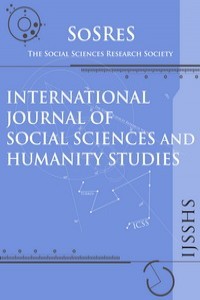A COMPARATIVE ANALYSIS OF COPING STRATEGIES USED BY FOOD SECURE AND FOOD INSECURE HOUSEHOLDS
A COMPARATIVE ANALYSIS OF COPING STRATEGIES USED BY FOOD SECURE AND FOOD INSECURE HOUSEHOLDS
- Başlangıç: 2009
- Yayıncı: Sosyal Bilimler Araştırmaları Derneği
WORKPLACE SPIRITUALITY FOR IMPROVED PRODUCTIVITY: A GENDERED PERSPECTIVE
A COMPARATIVE ANALYSIS OF COPING STRATEGIES USED BY FOOD SECURE AND FOOD INSECURE HOUSEHOLDS
Wynand CJ Grobler, Steve Dunga
DISASTER RISK REDUCTION PERSPECTIVES IN HEALTH SERVICE DELIVERY IN SOUTH AFRICA
Roshilla SAHADEO, Mogie SUBBAN
SOCIAL FRANCHISING AND SUPPLEMENTARY TUTORING: A QUALITATIVE ANALYSIS OF FACILITATORS’ PERCEPTIONS
Pieter van Schalkwyk, Jhalukpreya Surujlal
Petrus MACHETHE, Emeka E. OBİOHA
ASSOCIATION OF FOOD SECURITY AND HOUSEHOLD DEMOGRAPHICS IN A SOUTH AFRICAN TOWNSHIP
GAMES FOR LEARNING IN ACCOUNTANCY EDUCATION: A SYSTEMATIC LITERATURE REVIEW
Veruschka Pelser-Carstens, Margaretha Johanna Preston, A. Seugnet BLİGNAUT
THE CONTRIBUTION OF LECTURE CAPTURING TO THE LEARNING EXPERIENCE OF ACCOUNTING STUDENTS
